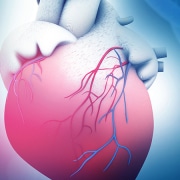Destined for fitness? The genetic influences on exercise
Studies have identified genes that can influence a person’s exercise performance and response, as well as their propensity for injury
Any dedicated gym user who has spent many hours in the weights room, at spinning class and such like has probably questioned the physical results achieved in comparison to (perceived) effort: why do I still get out of breath walking up stairs? Why is my body mass index (BMI) rating only average? Why do I suffer persistent shoulder pain?
Lack of time, boredom, poor results and injury are frequent reasons for not maintaining a regular exercise regime. Yet the success of public health interventions against conditions such as obesity, diabetes and heart disease depend on overcoming these barriers and encouraging individuals to maintain healthy levels of physical activity.
Seeing positive results in return for effort can help us stay motivated. Unfortunately, we don’t all respond to specific forms of exercise in the same way. Scientists are now uncovering a range of genetic influences on exercise performance and response.
Exercise that fits
The Human Gene Map for Performance and Health-related Fitness Phenotypes is a comprehensive (at the time of publication) list of genes with associations across the range of measures – including insulin sensitivity, muscle strength and power. News from more recent studies is published in the annual review Advances in exercise, fitness and performance genomics.
A much-publicised study has shown that RNA profiling with single-gene DNA marker association analysis can identify at a molecular level which individuals are likely to show most improvement in aerobic capacity as a result of endurance training (steady-paced exercise over an extended period of time).
Sticking with it
So, there is evidence of genetically linked variations in what we can expect to happen to our bodies as a result of specific types of exercise. However, sometimes even great short-term results are not enough. The 2013 TIGER study suggests even our ability to stay motivated may be, in part, genetically determined.
Moreover, injury can halt even the most dedicated exercise enthusiast in their tracks. Studies have found several genes linked to a propensity for soft tissue injury. TNC, COL5A1 and MMP3 genes have shown variants associated with Achilles tendon injury, and the COL1A1 and COL5A1 genes have been shown to be associated knee ligament ruptures and/or shoulder dislocations.
Taking a personalised approach
Should genetic testing be included in personalised approaches to encourage us to develop and maintain healthy levels of physical activity? While many of the studies cite influences from single genes of up 40%-50%, a closer reading makes clear that the interplay between genes, and between genes and lifestyle / environmental factors, is hugely complex.
Competitive athletes or anyone considering a more arduous exercise regime may be advised to include genetic factors in any risk assessment model. Some experts suggest that top athletes might benefit from screening for rare but potentially fatal forms of cardiac disease.
For the rest of us, genetic aspects may be interesting, but when it comes to keeping motivated and injury-free, external factors – including current level of fitness, engaging good technique, and opportunities to access a range of physical activities – are arguably the most important.
–









